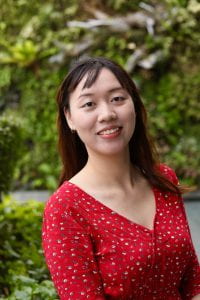Born in southeastern China, I was raised in a Chinese-speaking household. My parents speak Gan Chinese to each other while speaking Mandarin to me most of the time. During my school-age years (5 to 12), my nanny spoke Cantonese to me. Since my early childhood, I experienced code-switching between two to three languages and was fascinated by the variety of the languages spoken at home and in some communities.
Growing up in Guangdong Shenzhen, which is a city filled with migrants, I came into contact with many different languages and dialects. I quickly developed a passion for learning words in these languages, mainly through conversations with people whom I have met. I would get particularly excited when I came across a new language with phonetic features or syntactic structures that are different from the languages I spoke. This passion led me to examine spoken word recognition in my undergraduate studies and to explore psycholinguistics and language development for my Master’s dissertation, as well as my current PhD thesis.
Besides Mandarin Chinese, Gan Chinese and Cantonese, I also speak English (began learning in primary school) and Korean (began learning in high school). In order to help words in these foreign languages “stick” in my mind. I joined the film subtitles translation group, where I honed my listening and reading skills in group activities. For now, English is my main language in the workplace and within the world of academia. I can handle basic Korean with my Korean-speaking friends.
I feel lucky that I grew up and have been experiencing life in multilingual communities as I can have the opportunity to acquire and experience diverse languages and the abundant culture they carry. Imagine if the majority of languages and dialects were not spoken by humans and the whole human race had only one language. Will we still hold on to our culture? How will we identify ourselves?
Pan Lei is currently a PhD candidate at BLIP Lab where she examines psycholinguistic similarities and differences among people who speak different languages.
